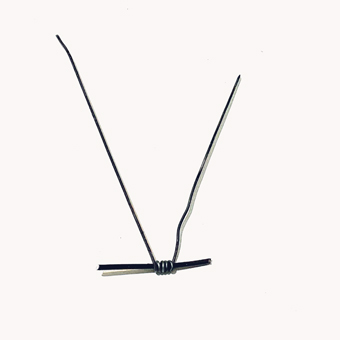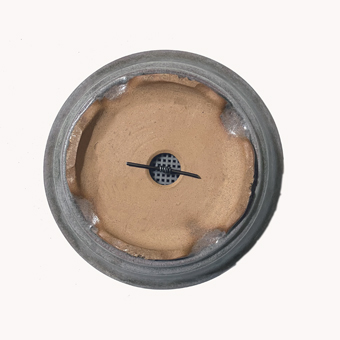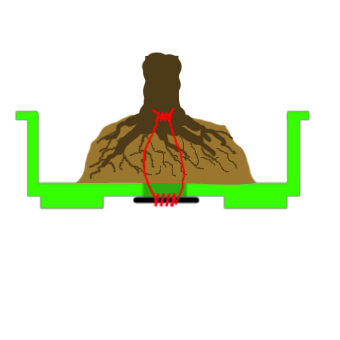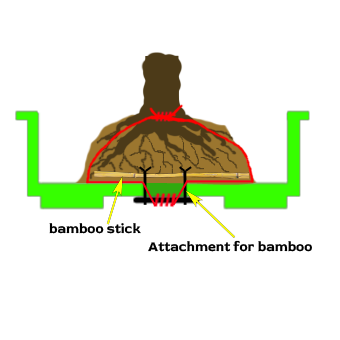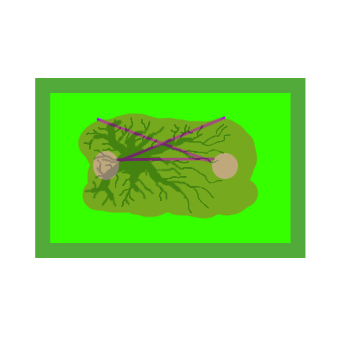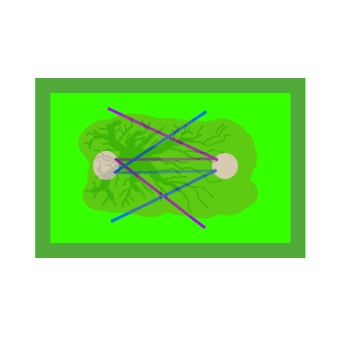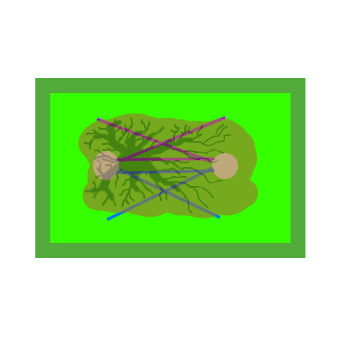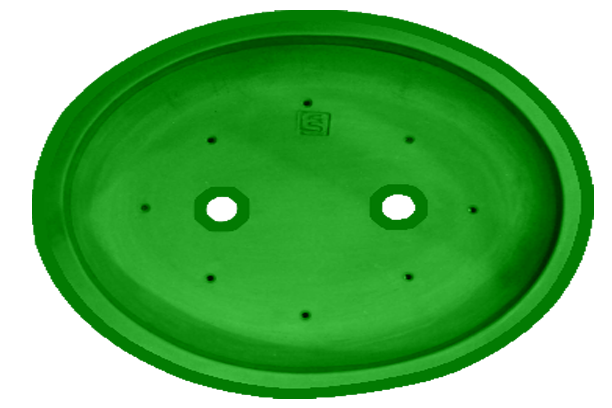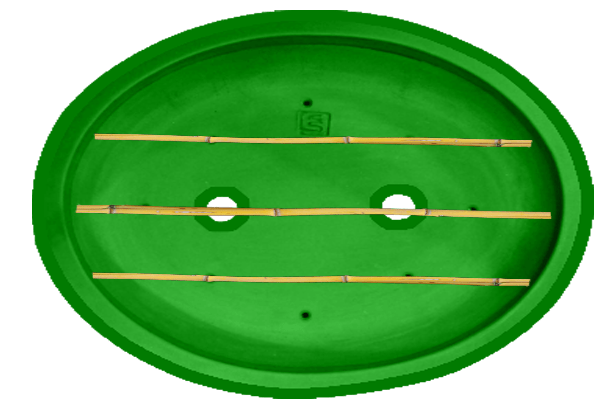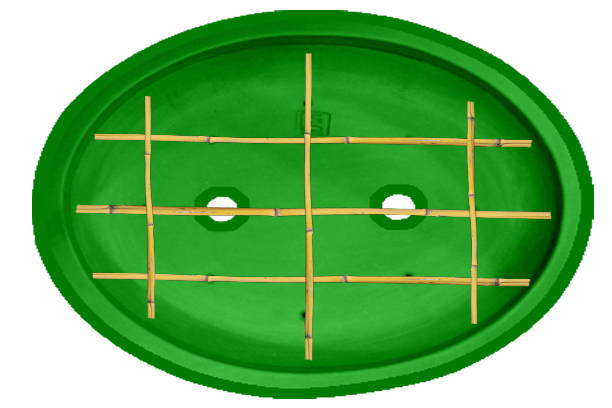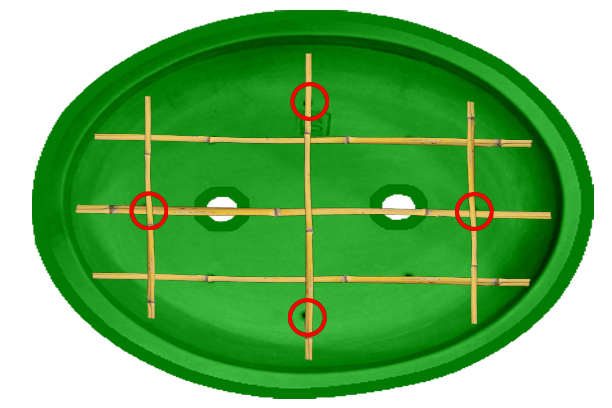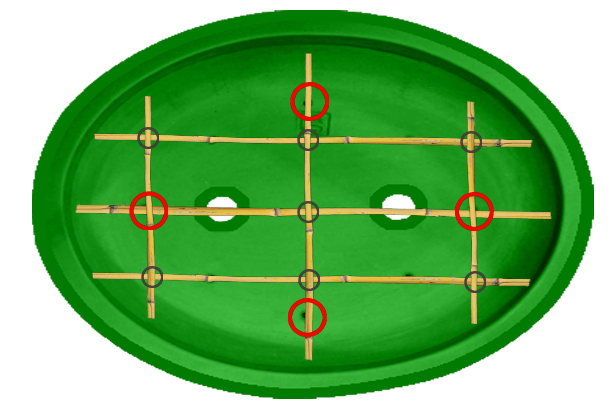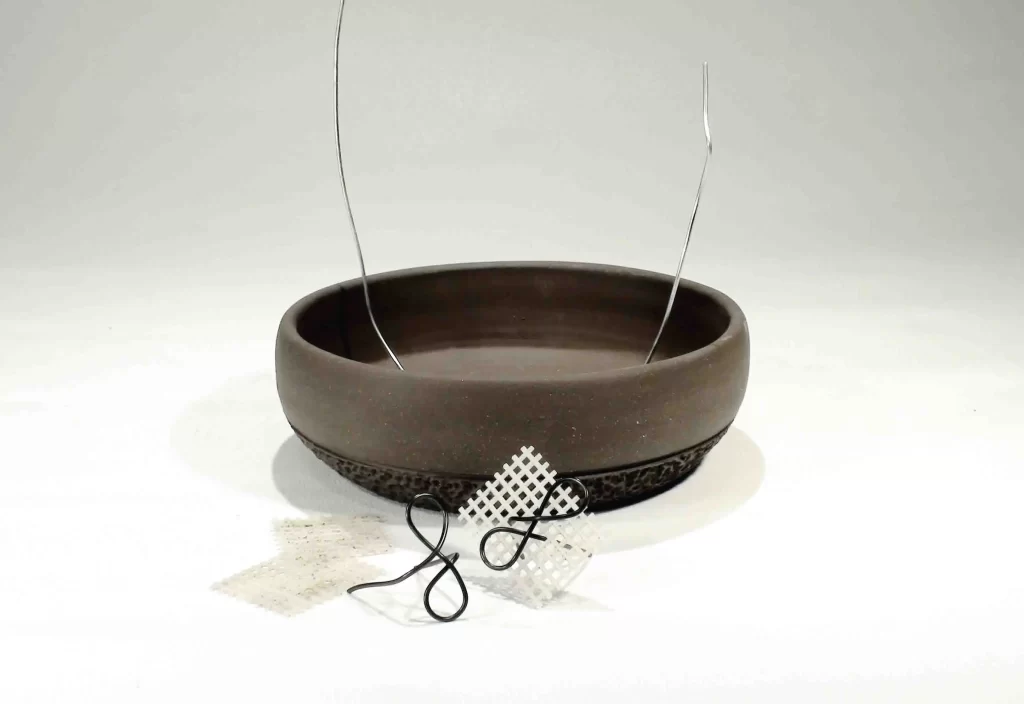
How to secure a bonsai in its pot when repotting!
Claude Savard
CSCeramique
To successfully repot a bonsai, the tree must be firmly secured in its new pot.
This step is of the utmost importance, as it aims to protect the delicate roots from unwanted movements, such as wind shocks, which could compromise their health. When repotting, the thicker roots, which play a supporting role in nature, are usually removed, leaving the tree without this natural stability. This is where anchoring comes in, providing the necessary stability in the new pot environment.
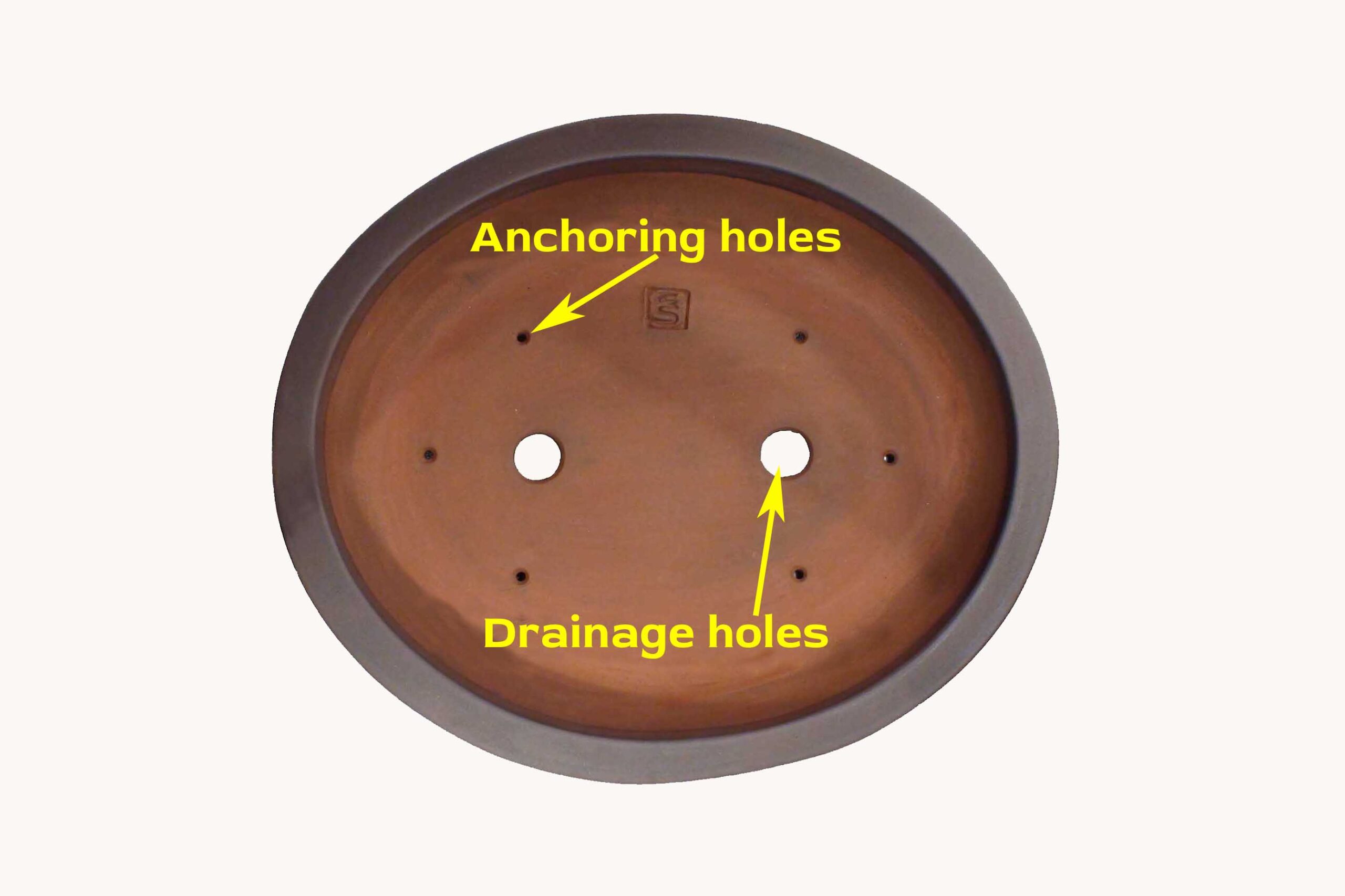
Correctly attaching a bonsai to the pot is essential, and there are several aspects to consider in doing so. Firstly, opt for a pot that is fitted with anchoring holes. It's best to avoid cheap pots that may lack these holes, as they are essential to securely anchor the tree. What's more, the quality of the pot's clay is crucial, as poor-quality pots could crack when the wires are tensioned.
Find the right wire for your fastener.
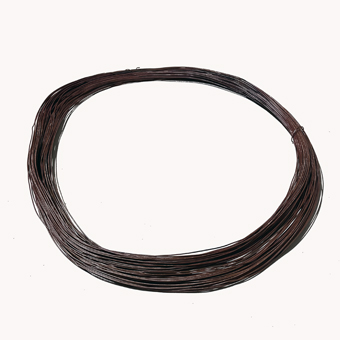
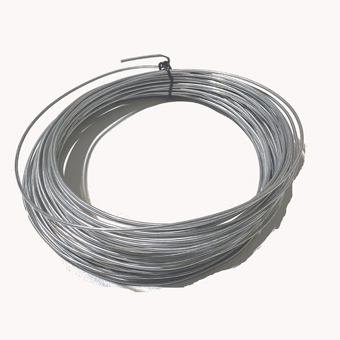
The choice of anchoring wire is also crucial. High-quality wire is recommended, to avoid inconveniences such as breakage during tightening. Aluminum, often used to attach branches, can become brittle and break when twisted and tightened. Opting for (annealed) copper wire specially designed for bonsai is a better option. Avoid electrical copper wire to avoid oxidation, which can damage the tree and preserve its health.
In my experience, using 1 mm galvanized steel wire has proved to be a very effective method of anchoring my trees. This type of wire offers several notable advantages. Firstly, it offers exceptional tensile and torsional strength. What's more, its ability to resist oxidation is an important asset. This specific wire is generally available from quality hardware stores, making it easy to source. One point to emphasize is its strength in relation to its fine diameter, as well as its ability to blend discreetly into the substrate. This preserves the overall aesthetics, as the wire remains inconspicuous while keeping the trees firmly anchored.
Finding the right way to tie your bonsai.
In this article, I'll show you some effective ways of attaching your bonsai to its pot when repotting, for different types of pots and tree configurations.
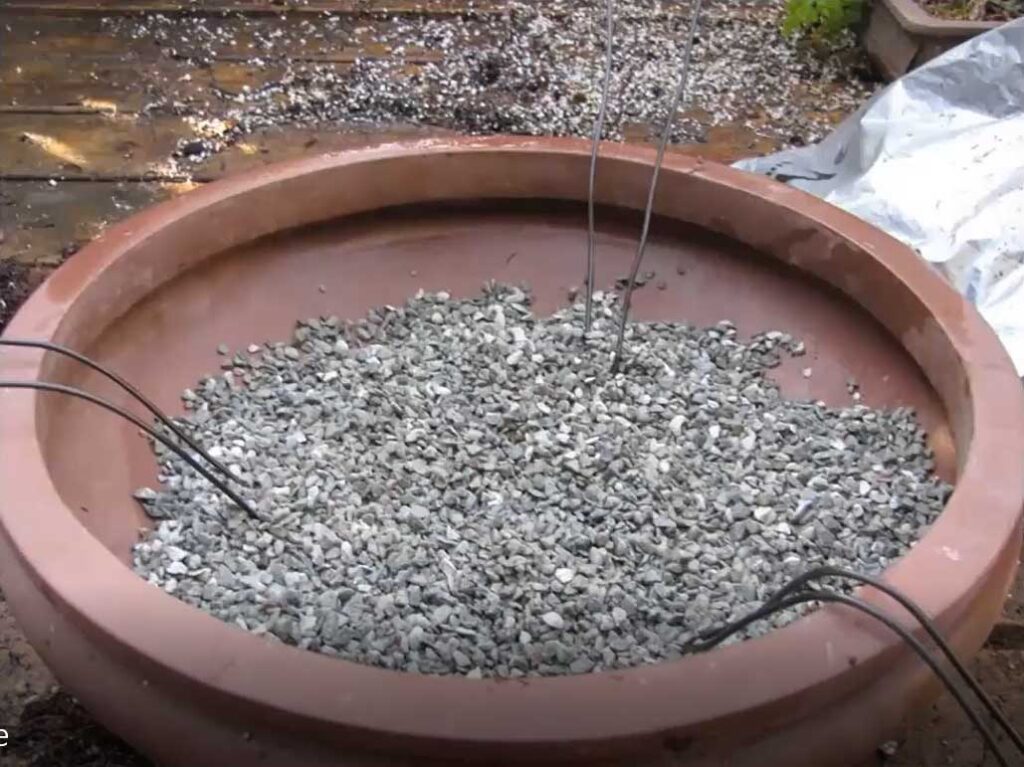
How to tie your tree with a pot without an anchor hole.
When a pot doesn't have anchor holes, some recommend simply using existing drainage holes to run the wire through. While this may work, it's crucial to consider the underlying challenges. If the pot has only one drainage hole, attaching a wire to secure the tree may seem complex.
The one-wire method.
If you have a pot with two drainage holes, stabilizing your tree becomes easier.
The two-wire method.
You can choose to attach the two wires of the same strand on the corresponding side, or cross them to ensure optimum anchorage.
Bamboo is a good choice. This material offers high tensile strength and tolerates moisture. Although not indestructible, bamboo will remain virtually intact until the roots have developed sufficiently in the substrate. Adding bamboo to the pot will in no way hinder the tree's growth.
To maintain bonsai in pots without holes, you need to find clever solutions. Use wire of the right gauge, bamboo sticks and careful planning. This will ensure solid anchorage and promote harmonious growth.
What is the best method for fixing bonsai in pots with anchor holes?
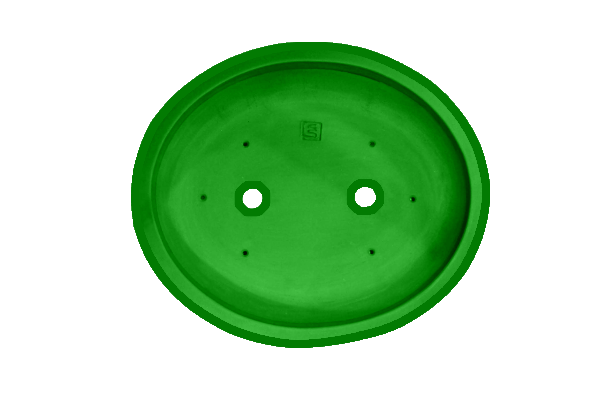
L’attache sécurisée d’un bonsaï dans un pot doté de trous d’ancrage est essentielle pour assurer sa stabilité et son épanouissement. Idéalement, un pot à bonsaï devrait comporter au moins quatre (4) trous d’ancrage, en fonction de sa taille. Cependant, il est possible d’utiliser certains pots comportant seulement deux (2) trous d’ancrage pour les bonsaïs. Toutefois, il faut noter qu’ils seront plus difficiles à stabiliser en raison des options limitées en termes de fixation. Ces pots sont davantage adaptés aux plantes compagnes telles que les « Shitakusa » ou les « Kusamono ». De plus, il est important de souligner que certaines plantes nécessitent également d’être fixées.
The key to stability lies in using a high-quality pot. When you tighten the wires to stabilize the tree, the bottom of the pot must remain intact. A good quality pot will withstand this pressure.
The two-wire method.


In the case of a pot with four or more holes, the method of crossing the wires under the pot is preferable. This involves using each wire to secure the tree, ensuring a solid hold. This technique has the advantage of creating two points of stabilization at the root ball of the tree. The choice between these methods will be determined by the location of your bonsai within its pot.
How to test your anchoring?
One way to test the strength of the anchor is to gently lift the tree by the trunk. If the pot stays firmly in place and follows the movement without descending, the anchoring is adequate. If not, adjustments are necessary.
In short, tying a bonsai into its pot when repotting with anchor holes requires a meticulous approach. By choosing a quality pot, crossing the wires underneath and carrying out strength tests, you can ensure your bonsai's lasting stability and health.
How to tie a forest in a bonsai pot?
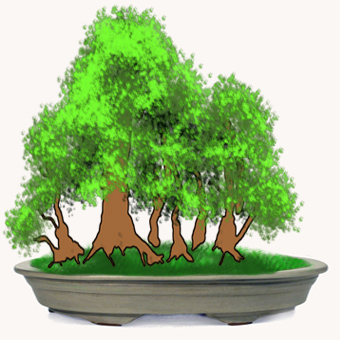
As you can imagine, there are several steps involved in creating a bonsai forest that fits perfectly into a pot. Trees are not always perfectly aligned with the holes provided for their attachment. What's more, these trees are often arranged in small groups, leaving few places available for later fixing once one or two trees are already in place. So how do you go about it?
Let's take a look at some examples.
To begin with, obtain bamboo stalks and trim them to perfectly match the size of your pot. These rods will serve as the base for your structure. In this example, we'll use three horizontal rods at the fixing hole locations, then repeat this step with vertical rods in the same places (indicated by red circles). This grid forms a pattern. To secure the assembly, apply the same method used to stabilize a structure without fixing holes.
The next step involves tying the intersections of the bamboo stalks with wire (represented by black circles). Once you've completed this phase, anchor your trees securely by wrapping the wire around the bamboo stalks, according to their arrangement. By following these steps, you can create a miniature potted forest, despite the apparent challenges.
In summary, to enhance a bonsai when repotting, choose an appropriate pot, use quality wire and follow best anchoring practices to ensure its long-term stability and health.
